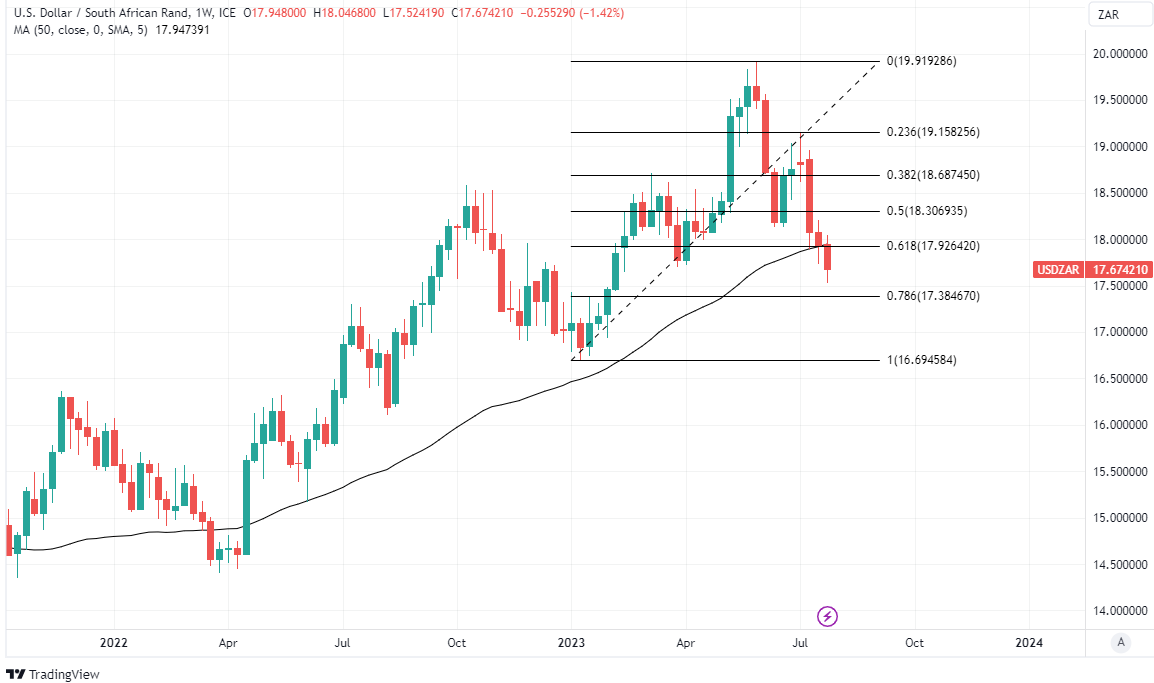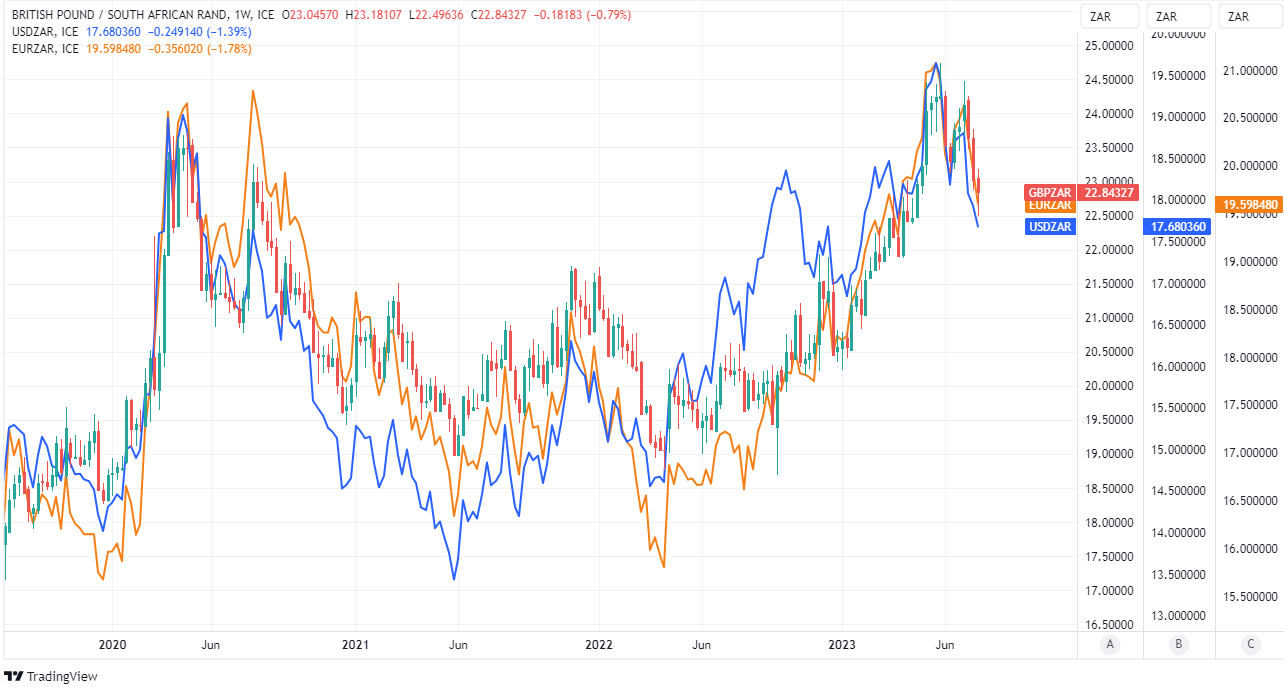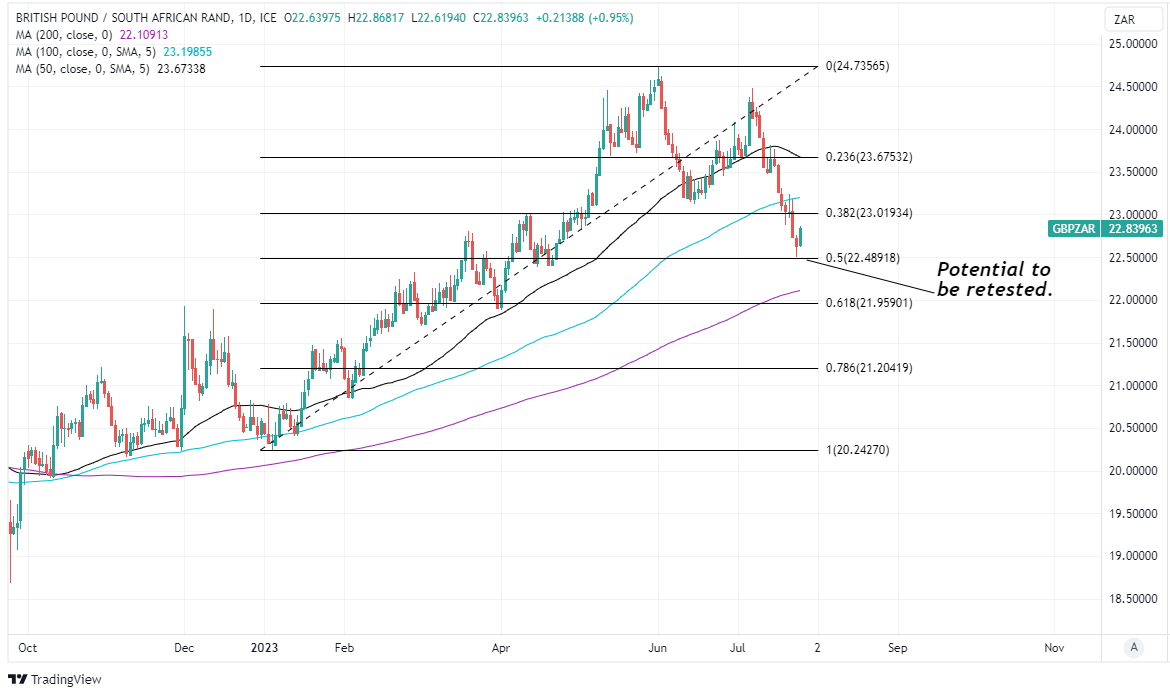Pound to South African Rand Exchange Rate Bogged Down Near 22.50 Short-term
- Written by: James Skinner
"The current levels around 17,5800 this morning are likely to again prove attractive to buyers of USD initially, with some caution going into the close" - Nedbank.

Image © Adobe Images
The Pound to South African Rand exchange rate rebounded off a major technical support level on the charts in midweek trade but could struggle to lift far off it in the wake of interest rate decisions from the Federal Reserve (Fed) and European Central Bank (ECB) on Wednesday and Thursday.
South Africa's Rand fell close to the bottom of the G20 currency bucket on Wednesday when underperforming alongside the Chinese Renminbi amid widespread declines for stock markets around the world and despite earlier announced government plans to support the economy through increased spending in some areas.
Rand exchange rates remained some of the biggest risers for the recent week and month, however, recent history suggests they would be susceptible to further weakness if the Federal Reserve stands behind June's Federal Open Market Committee forecasts for the Fed Funds rate this week.
"We expect the FOMC to announce a 25bp hike on Wednesday, and we think this is likely the last hike of the cycle. n the press conference, we think Powell will still take a hawkish line," says Bob Savage, head of markets strategy and insights at BNY Mellon.
"But by the time of the next FOMC on September 20, it will be difficult for the Fed to follow through on an additional hike with data indicating inflation on the retreat and economic growth starting to demonstrably slow," he writes in Wednesday commentary.
Above: Pound to Rand rate shown at daily intervals with Fibonacci retracements of 2023 rally indicating possible areas of technical support. Click image for closer inspection.
Uncertainty and currency risk is higher in relation to the Fed decision than it is for the ECB on Thursday and perhaps also with the Bank of Japan (BoJ) on Friday but with the correlation between GBP/ZAR and the Dollar Index turning negative in the last week, the implications for the pair might be limited.
"Much however will depend on communications from the FOMC, with a ratcheting up of hawkishness from the FOMC likely to negatively affect market expectations and so the rand (as the USD strengthens), if further hikes post July seem likely," says Annabel Bishop, chief economist at Investec.
The two most likely outcomes on Wednesday are either the widely expected decision to increase the Fed Funds rate to 5.5% or a potential surprise decision to leave it unchanged, though the prospect of an unchanged Fed Funds rate could be underappreciated following the latest decline in U.S. inflation.
"We wonder whether it wants to push back against the 100bp of easing priced in for 2024. We see the Fed event risk as a mildly positive one for the dollar," says Chris Turner, global head of markets and regional head of research for UK & CEE at ING.
Inflation is currently reported at 3% in the U.S., placing it close to the target 2% average target, which is one reason for why the Fed could choose to leave interest rates unchanged this week while March turbulence in the financial sector is another reason for why the bank might be reluctant to strike too hawkish a chord.

Above: USD/ZAR shown at weekly intervals with Fibonacci retracements of 2023 uptrend indicating possible areas of technical support for Dollar.
That turbulence arose with the failure of some small and medium-sized lenders after the derivative market pricing of September's interest rate decision peaked a short distance above 5.5%, though the author's estimation is that whichever way the Fed does on Wednesday, GBP/ZAR could struggle for traction somewhere between 22.53 and 22.64.
That would keep the 50% Fibonacci retracements of this year's uptrend at 22.49 under pressure ahead of Thursday's European Central Bank interest rate decision, though analysts and economists have increasingly suggested this is unlikely to do much to help the Euro, and that it would potentially lift the Dollar into the weekend.
However, the Bank of Japan (BoJ) monetary policy decision is a wildcard with likely supportive implications for other currencies if there is another change of the Yield Curve Control program parameters to permit increased government bond yields, but potentially bearish implications in the event of a large increase.
While the Yen has been positively correlated with many non-Dollar currencies in the most recent times, its subzero interest rate, low bond yields and long-standing use as a funding currency for investments in higher-yielding assets mean that any large change of policy might pose risk to lots of other currencies.
"The current levels around 17,5800 this morning are likely to again prove attractive to buyers of USD initially, with some caution going into the close," says Walter de Wet, a fixed income and currency strategist at Nedbank, in reference to USD/ZAR.

Above: GBP/ZAR shown at weekly intervals alongside USD/ZAR and EUR/ZAR.





